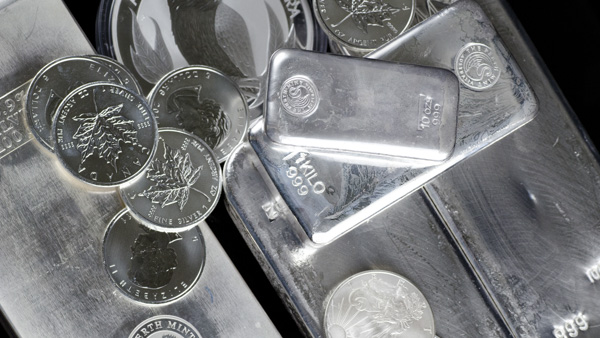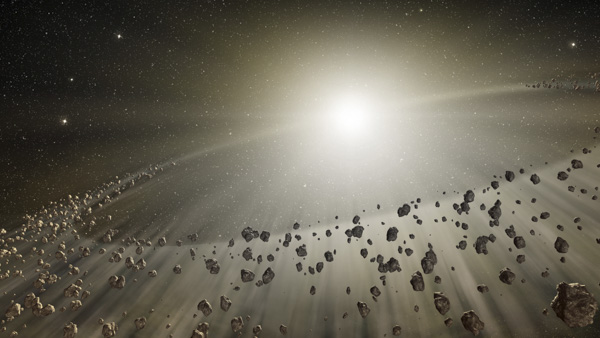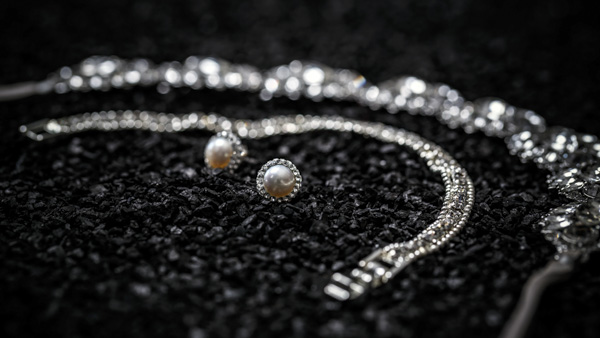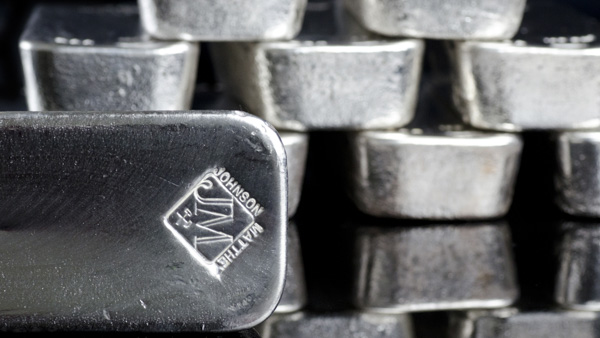How Silver is Formed

Silver is a soft, white precious metal that has been valued throughout much of history.
One of the seven metals of antiquity known to prehistoric humans, archeologists believe that copper, silver and gold in their elemental form were used as the first forms of money. Greek and Roman civilizations used gold and silver extensively as currency, and in Rome, the populace often learned of a new emperor when coins appeared with the new emperor's portrait.
Unlike today, silver prices used to be higher than gold. That's because silver is more reactive than gold, and so forms compounds more readily. Silver mining thus, turned up more silver compounds than pure silver ore. Because there were no reliable techniques for separating physical silver from other impurities at the time, supplies of pure silver were much more limited than those of gold until around the fifteenth century.
It was only after the discovery of the cupellation technique that silver production became more commonplace, and the metal saw more widespread use. As the name implies, cupellation is the separation of gold or silver from impurities by melting the metal in a cupel, and then directing a blast of hot air on it in a special furnace.
Slag heaps have been found in Asia Minor and on the islands of the Aegean Sea that indicate silver was separated from lead from as early as the 4th millennium BC. As a result of the cupellation technique, the use of silver blossomed greatly. Phoenicians used silver to weigh down their anchors instead of lead, while the Greeks and Romans used silver coins extensively for trade and business.
Where Does Silver Come From?

Like gold, silver is forged in supernova explosions. When stars die and explode, they send new materials into space in the process, and some land on planets in the immediate vicinity. That’s the origin of most heavy metals found on Earth.
With silver specifically, a type of nuclear fusion known as “weak r-process” occurs during the explosions of these massive stars, and this produces silver. Researchers have concluded that the weak r-process only happens in stars with masses eight to nine times that of the sun, but not heavier. These silver-producing supernovae are thought to be more widespread than their larger gold-producing cousins, which may be why silver on Earth is much more abundant than gold.
Back on Earth, the abundance of silver in the Earth’s crust is 0.08 parts per million. And it is found mostly in sulfide ores like acanthite and argentite. Argentite deposits sometimes contain native silver, but most true silver deposits came from volcanic activity millions of years ago.
A typical sulfide ore might contain 0.3% antimony., 0.5% lead, 0.5% copper, and only 0.085% silver. After flotation separation, the resulting concentrate would have something closer to 1.7% silver, 10-15% lead, 10-15% copper, and 6% antimony. The low ratios explain why only about 25% of silver produced comes from ores mined for their silver value, whereas the other 75% are collected as a by-product of mining other ores.
Silver deposits have also been found in the sea, especially in the deeper waters of the Atlantic and Pacific oceans. Silver is taken up by plankton in the photic zone, remobilized with depth, and enriched in deeper waters. Concentrations of silver follow the major oceanic conveyor belt that cycles water and nutrients from the North Atlantic to the South Atlantic to the North Pacific.
How Silver is extracted and purified for use

Today, we know that silver occurs in nature in one of four forms:
1. As a native element.
2. As a primary constituent in silver minerals.
3. As a natural alloy with other metals.
4. As a minor constituent in the ores of other metals.
Of the four, silver is most commonly found as a minor constituent in the ores of other metals. Specifically, silver ore is found largely during the mining of copper, lead or zinc. A large number of minerals also contain silver. Of these, acanthite, proustite, and pyrargyrite are the main ones that occur in large enough quantities to justify mining.
The main sources of silver we use are the ores from copper, copper-nickel, lead, and lead-zinc mines in Central and South America. The silver mines in Peru, Bolivia, Mexico, China, Australia, Chile, Poland and Serbia. Peru, Bolivia and Mexico have been extracting silver since 1546, and still rank among the world’s top producers.
Because copper and lead are also important for industrial production, the silver-bearing fraction of their ores is often recovered as a by-product of copper and lead production. Pure silver is then recovered by a combination of smelting and fire, or electrorefining of copper, lead and zinc. Silver can also be recovered from lead bullion by application of the Parkes process.
In such processes, silver is recovered from the by-product of smelting the main ore, and later purified. For example, with copper, purified copper is deposited on the cathode by electrolysis, while less reactive precious metals like gold and silver collect under the anode as “anode slime”. This is then purified of base metals by treatment with hot aerated dilute sulfuric acid and heating with lime or silica flux, before the silver is purified to 99.9% purity via electrolysis in a nitrate solution.
Commercially, fine silver is at least 99.9%, and purities of higher than 99.999% are available.
Where The Silver Goes

Besides currency (in the form of coins, ingots and bars), the next major uses of silver throughout history have been in jewelry and general-use items like silverware and musical instruments. Silver’s antibacterial properties make it ideal for tableware, but in most cases, the silverware is only silver-plated through electro-plating rather than being made of pure silver due to cost.
Pure silver is very soft, so silver is commonly alloyed with copper to provide an added degree of strength for daily use. That’s why we have ratings like Sterling .925 silver (which indicates 92.5% silver alloyed with 7.5% copper or metal) and Fine .999 silver (which is 99.9% silver alloyed with small trace elements). There is also Argenteum Silver, which is silver alloyed with small amounts of germanium, making it more resistant to tarnish.
Thanks to its antimicrobial properties, silver is also used in wound dressings and as an antibiotic coating in medical devices. Silver and silver nanoparticles are also used as antimicrobials. For example, clothes have been infused with nanosilver particles, thus letting them stay odorless for longer.
Industrial demand for silver is also high, due to its high thermal conductivity and outstanding electrical conductive performance. Silver has the highest thermal and electrical conductivity of all metals, making it invaluable for electronics that utilize electrodes and conductors, like the photovoltaic cells in solar panels. Bulk silver and silver foils are also used in vacuum tubes, semiconductors, circuit boards, and their components for the same purpose.
Silver as a Financial Asset

Of course, we also have silver bullion bars and coins. To create bullion bars and coins, silver is either refined through electrolysis or through pyrometallurgical chlorination – a process where chlorine gas is pumped into molten metal ores, causing any base metals present to evaporate or rise to the surface in the process. Once adequately purified, the silver is melted in metal or ceramic containers before being transferred to molds.
Finally, the silver is put into a high-powered machine for cutting and stamping into pressed bars. This process first sees the refined liquid metal poured into a casting machine, which forms long, thin bars. These bars are then pressed multiple times in a rolling mill until the correct thickness is achieved. After that, strips are formed in the exact thickness by passing the bars into a gauging mill. Blanks are punched from these strips and softened by heating so they can be polished, cleaned, and struck with the necessary marks, before going through a final round of inspection.
Blanks that do not pass quality control standards are recycled. Those that do are typically sold in the wholesale market, where buyers include large banks, trading companies, bullion dealers, and coin shops. National Mints may also acquire the silver directly to create official bullion coins.
As with gold, silver is traded on the market, with the metal's price determined at the time of asking, hence "spot price". This is generally calculated per ounce, and will differ by location, the time of asking, and the current market conditions.
Like other precious metals, silver supply relative to demand will affect the price. But besides demand for physical silver, the price of silver is also affected by the stock market, as "paper silver" in the form of futures options, ETFs and mining shares is also traded in significant volumes. Demand for these products also pushes up the demand for the physical and hence causes price rises.
Conclusion
So now we know, silver literally comes from the stars. On Earth, silver is primarily produced through mining. But because mining silver produces such low yields, most of the silver ore we use is obtained as a by-product from mining other metals, and putting the recovered ore through smelting or electrorefinement to remove unwanted trace metal.
The unique physical properties of silver mean it is used in many forms.
The silver we use daily is often alloyed with other metals to provide the necessary strength, as with jewelry. In electronics, silver sheets and wire are used for their high electrical and heat conductivity. That's why they see heavy use in things like solar panels, where efficiency is paramount.
And finally, we have silver bullion bars and coins, which are bought and sold by collectors and investors who wish to add a metals focus to their wealth portfolios.
Added reading:
-
Read Gregor Gregersen's comments about the findings from Silver Institute's 2023 World Silver Survey.
-
Check the latest spot price for silver, and analyze historical demand with our silver price chart.
-
Browse our collection of silver coins and silver bars.